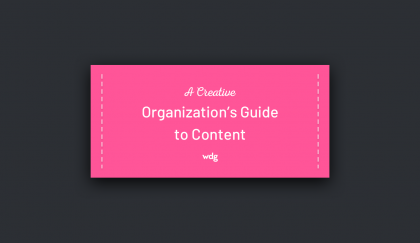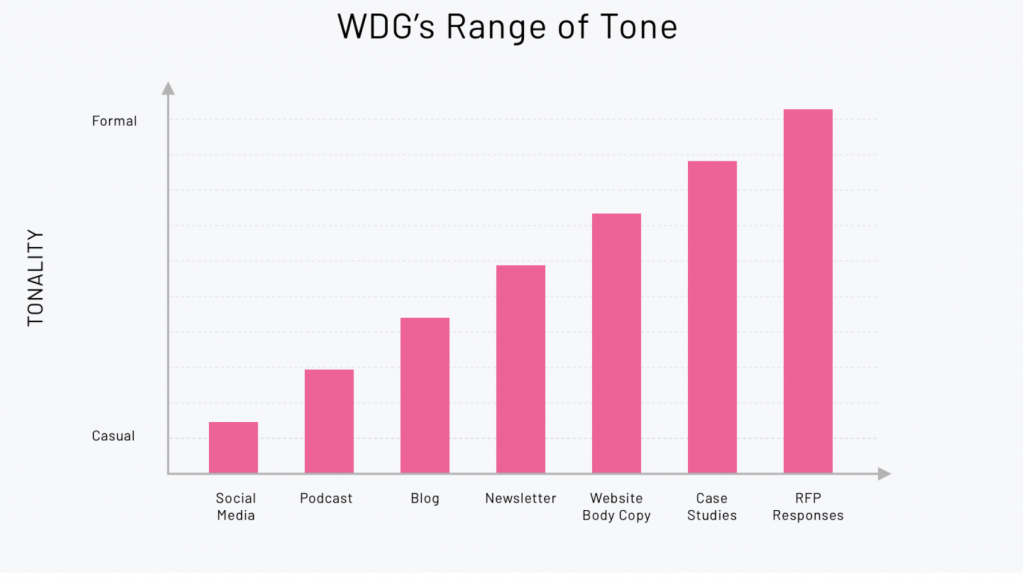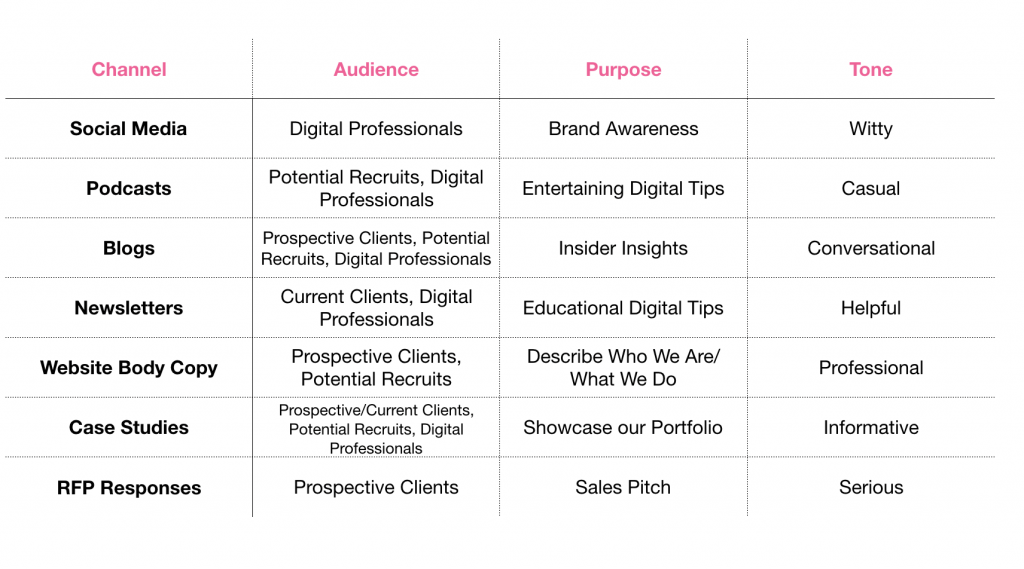Where’s Your Content Style Guide?

Style is important.
Style is what makes you stand out, leave an impression, and be remembered by audiences. And distilled to its purest form, style is how your organization operates. How do you manage? design? write? These may be instinctive choices. Even so, you need to acknowledge whatever your team’s style happens to be, articulate it, and establish parameters to stay consistently in that space.
This will manifest in a Style Guide.
These Design/Content Style Guides can be downloadable or shareable PDFs or more of an immersive experience on one of your site’s pages. They’re doubly beneficial, signaling to prospective clients and recruits who you are and how you work while providing an internal compass for your team. Most ideally, you can collaborate with clients to help or advise them to create their own.
These guides should also be living documents, changing and growing in step with your organization.
Brand Style Guides
WDG Content Style Guide
Our way of writing content at WDG is not the only way to write but it’s the best for us in that it represents who we are. The voice and tone of your written word should always be a natural extension of your organization’s thinking, personality and brand.
A user should know it’s WDG every time they read our content, the same way they’d visually recognize our pink and white branding and logo. This instantly recognizable sound of our content is our voice, and we want it to be distinct and accurate. Our tone relies more on the context of the intended audience or the channel used to communicate (more on that later).
At WDG, our writing is professional, clear and accessible. We want to give our readers the essentials with a human touch, striking the right balance of providing information and insights without talking over or under our readership.
Our voice is business casual, as we’re approachable but always take the work seriously.
Our written copy should:
- Explain: Whether you’re a subject matter expert or civilian, our copy should always distill down content so anyone can grasp it.
- Help: Whichever resource or bit of information a user is after, the content should always guide them in the right direction.
- Engage: Clarity is key but if there’s a chance to entertain audiences, we will.
- Be Humble: While we’re proud of our accomplishments, we never go out of our way to boast about how we’re the best ever.
Rules for Writing for the Web
- Always spell out an acronym first.
- Headers are your friend.
- Never use an obscure word when a simple one will do.
- Avoid tech cliches.
- Stop repeating yourself.
- Don’t let Grammarly decide for you.
Striking the Right Tone
Your brand’s voice and tone that animates your content should represent your organization’s persona and values. This includes the words you choose (diction), the order in which you put them (syntax), and applies to all the content you deliver — the copy on your site’s pages, tweets, email newsletters, et al.
There will be a range in tone depending on the format, obviously. Instagram posts, podcasts and blogs will skew more casual while case studies and Request For Proposal (RFP) responses will be more authoritative. But they should all more or less sound like you.

It’s not just the kinds of content that dictate the tone, it is which audience is consuming that content and why. Just as in life, everyone code-switches depending on their motivations and who they’re talking to, the same dynamic exists for which user or audience you’re focusing on.

Social Media Marketing
There’s varied ways to win the Social Media game.
- LinkedIn: The platform has changed into a content-publisher and we’ve taken advantage by taking the most creative chances here. It’s built for business conversions.
- Instagram / Facebook: Obviously both are heavily visual, but captions should be quippy. Instagram is ideal for brand awareness engagement; Facebook better suited for potential conversions.
- Twitter: Our Twitter page is mostly relegated to WDG-related news or updates — conversational in tone.
Best Ways to Write Content
- Podcasts: Our Strategy Bytes podcast is a quick recap of digital tips and tricks; it’s casual but fully scripted.
- Blogs: Our Insights page features thought leadership in a conversational tone.
- Newsletters: Our UX Bytes weekly newsletter provides helpful advice for fellow digital marketers.
- Website Body Copy: The wording on our site’s pages needs to be clear, succinct and professional.
- Case Studies: While heavily visual, the written content of our case studies needs to be as detailed and informative as possible.
- RFP Responses: Whether in a Keynote Deck or a Google Doc, the written part of our pitch to prospective clients needs to have gravitas.
The internet is becoming increasingly post-text, so our words at WDG need to matter, have impact and always connect with audiences.
